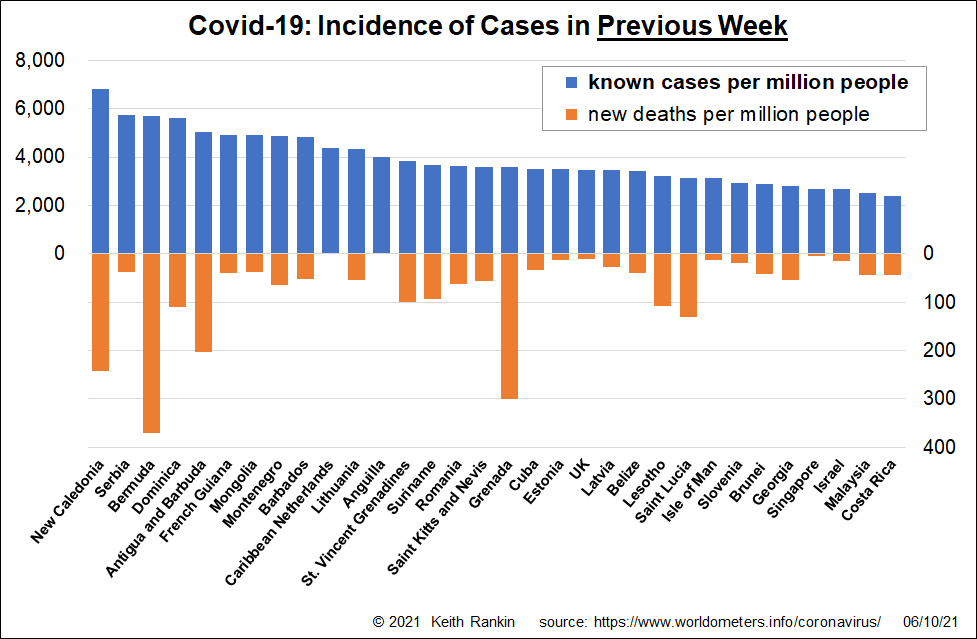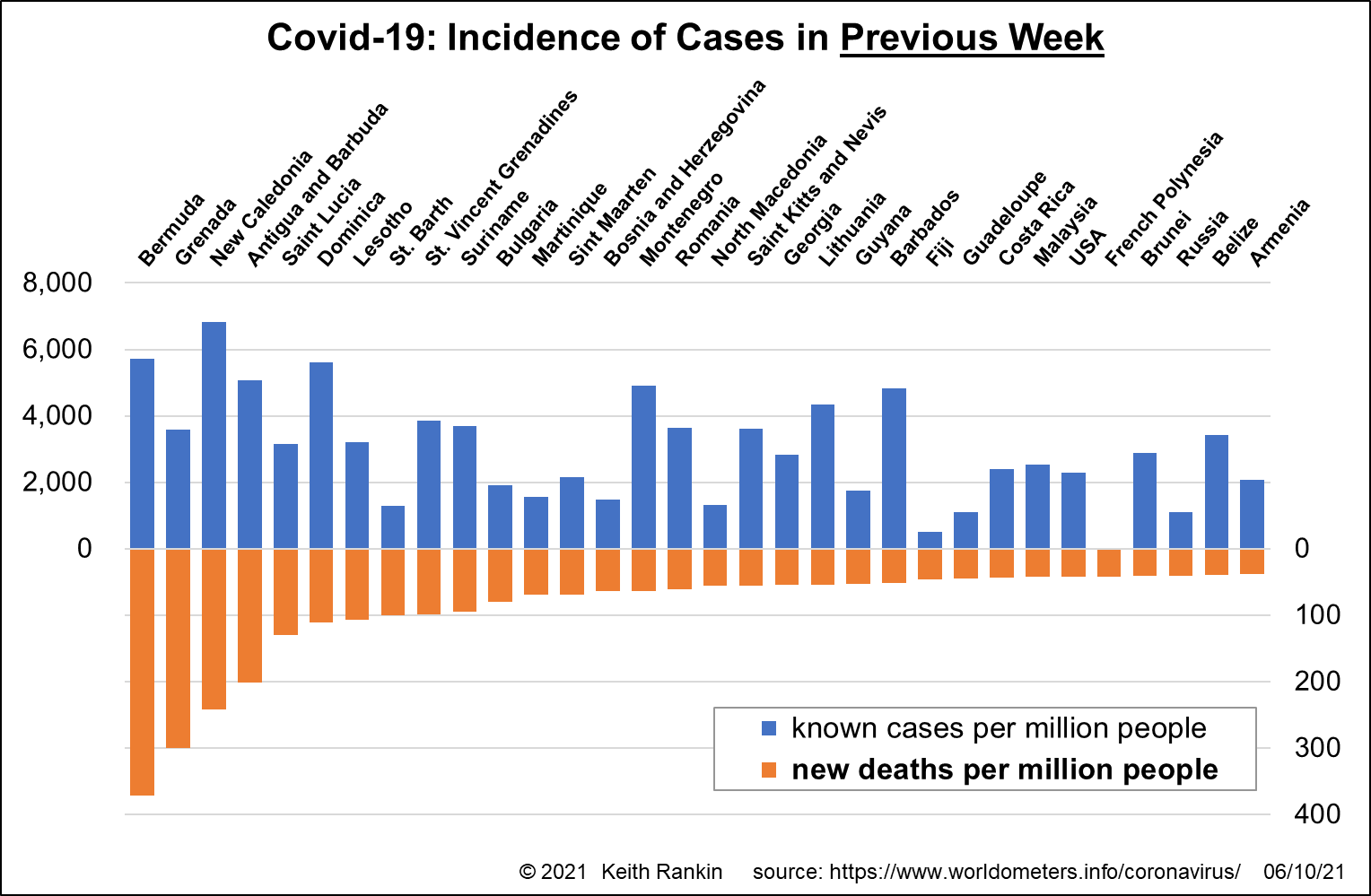Analysis by Keith Rankin.
The first thing to note – some good news – is that the sixth wave of Covid19 is on the wane.
For the first wave, see https://www.worldometers.info/coronavirus/country/china/. In particular, look at ‘Active Cases’ in China.
For the following five waves of Covid19, see https://www.worldometers.info/coronavirus/. In particular, look at World ‘Daily Deaths’.


Having noted these points of optimism, there are these following regional outbreaks, apparent from these two charts:
- Caribbean, especially, now, the British Caribbean, which includes continental Guyana and Belize. Much of this group (including Guyana) participate in the West Indies cricket team. Two others in West Indies Cricket, Jamaica and Trinidad/Tobago, are also highly covid-active. We may include Bermuda in this British Caribbean group. Cuba should be noted here; it has been a Covid19 leader in the Caribbean for some time now.
- Balkans. As a region (and Peru aside) the Balkans are the worst affected by Covid19 deaths per capita.
- Russia and the Caucasus. Russia, Armenia and Georgia show up. Ukraine will soon do so. Belarus, which has has been in the death zone for a while, has just started a big new outbreak. Azerbaijan is just getting over its September outbreak.
- Baltic States. Lithuania, Latvia and Estonia all feature in my first chart above. These are in the European Union. Lithuania and Estonia have vaccination rates comparable with New Zealand.
- Greater Malaysia. The outbreak in Malaysia these last few months has a very long tail. Brunei also shows in both charts. More concerning, Singapore , which now shows on one of the above charts, has just commenced its biggest outbreak ever, after a year of being a Covid19 poster-child.
- South Pacific. We see New Caledonia prominent on the charts. French Polynesia and Fiji still feature. French Polynesia stopped counting cases. And of course, Australia and New Zealand, while not yet prominent in the league table charts shown, are on the wax after having both seemed to be coming out of their August/September outbreaks. Oceanian populations were particularly vulnerable to respiratory infections, this southern winter.
- Others to note. The United Kingdom and Isle of Man are still showing in the ‘cases’ chart. So is Israel. These are well vaccinated, so not so prominent in the death league. But waning vaccine immunisation is likely to be a factor here. And the United States continues to show up in the death league; its mish-mash of public health measures and vaccine resistance will both be contributing factors here.
Looking at the situation in Aotearoa New Zealand today, I would like to see the whole of the North Island except Wellington moved to Public Health Emergency level 2.9 (which rounds to 3, so counts as ‘lockdown’), which is effectively what Auckland is in now. We can have a domestic land border on the Wellington sides of Otaki and Featherston. Wellington can move down to ordinary Level 2, and the South Island to Level 1.
Re domestic air travel, we need domestic red flights and green flights. Green flights would only be within the South Island, and between Wellington and the South Island.
The vaccination push needs to focus on provincial cities, towns and townships. There are vastly more difficult-to-access people in New Zealand’s North Island provinces than our politicians and bureaucrats realise. Just considering Māori regional population growth – thanks to the housing induced exodus from Auckland over the last decade, and to a return migration of Māori from Australia – true Māori vaccination rates in the North Island hinterland are even lower than quoted statistics reveal.
Viruses are better census-takers than are the New Zealand central government bureaucracies.
Keith Rankin (keith at rankin dot nz), trained as an economic historian, is a retired lecturer in Economics and Statistics. He lives in Auckland, New Zealand.







